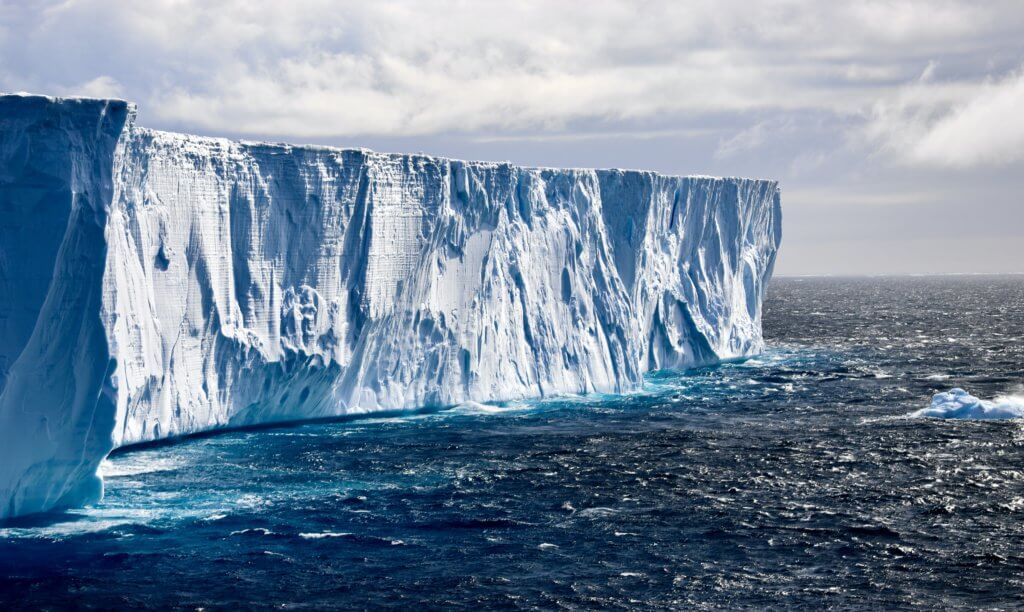Reece High School Grade 8

Hey Reece Grade Eighters!
Thank you for your questions about climate change. You asked some really interesting questions about ice, the future of our Earth, the atmosphere, and climate science.
You'll find answers to your questions from our climate experts below - have a read and watch their answers.
You can also have a look at what other classes across Tasmania asked this year, as well as our climate change toolkit.
Our Questions
On average, the global sea level is expected to rise by about 40 cm, nearly half a meter, by 2050. Of course, sea level rise depends on how much carbon dioxide emissions are released by humans. However, in 2050 there actually isn’t much difference between predictions of the best (RCP2.6) and worst (RCP8.5) case scenarios. It is not until after 2050 that their paths really diverge. That’s because it takes a lot longer for the ocean and ice on the planet to respond than the atmosphere.
Interestingly, the amount sea level rise will be quite different depending on where you are. In Sydney, for example we might expect .2 m by 2050, but in NYC it could be up to .45. This is because there is a lot more land in the northern hemisphere and all that land is very heavy. Its weight actually pulls water to the north via the force of gravity.
To calculate how much land that increase in sea level will flood, you also need to consider how far above sea level the coast line is. Over all, once you consider the shape the coastline around the world, we could be looking at 4.3 million acres underwater. That land contains the homes of 40-150 million people.
That’s a great question! The majority of people who visit Antarctica do so by ship, so vessels play an important role in allowing humans access to the area. While the reduction in Arctic ice has led to the development of new shipping routes in the north, the Arctic is closer to where people live and such routes are therefore useful for trade purposes. Antarctica is far away from where most people live, so the vessels that head south have specific reasons for doing so. They might be undertaking a scientific expedition, taking tourists to experience Antarctica, undertaking permitted fishing in the Southern Ocean, or patrolling to detect illegal fishing. It can be dangerous to sail into the Southern Ocean because of the large waves that form, the notoriously strong winds (such as the furious fifties and screaming sixties), hazards such as icebergs, and the remoteness of the region.
Every year Antarctica doubles in area over the winter, as the sea ice forms on top of the ocean around the continent’s margins. Sea ice is different to icebergs. Icebergs are formed when ice sheets flow down to sea and float, turning into ice shelves, and then large chunks break off at the terminus. It’s sea ice that has a big impact on navigation. When there is less ice, vessels can travel further south along the coastline. This is why Antarctic tour operators tend to offer “Antarctic Circle” voyages that go south of 66 degrees south at the end of the season (February-March), because there is less sea ice around in the late summer and ships can travel further south. It’s also why National Antarctic Programs schedule resupply voyages to coastal stations near the end of summer. You may have seen reports about the discovery of Ernest Shackleton’s vessel Endurance in the Weddell Sea area in 2022 – this area was accessible due to a record low sea ice season, making it possible to travel further south. So to answer the question, changes in sea ice extent from year to year and over longer time scales impact on the accessibility of the region, but this has had more impact on shipping in the north. For up to date sea ice maps of both regions you can visit https://earthobservatory.nasa.gov/world-of-change/sea-ice-antarctic
The North Pole and Antarctica sit at opposite ends of the Earth. If you think of them just as spots on a map, then they will definitely still exist in 2040.
But, if we instead ask “Will the North Pole and Antarctica be the same in 2040 as they are today?” then the answer is a little different.
The North Pole sits in the middle of the Arctic Ocean. For centuries, this area has been covered in frozen seawater, which we call sea ice. As our world warms, the amount of ice covering the Arctic Ocean has been decreasing, especially in summer. By 2040 it’s possible that there won’t be any sea ice left in the Arctic Ocean during summer.
Antarctica isn’t just a place on a map; it’s a continent, like Australia. Although Antarctica might look a little different by 2040, it will still be there and still be covered by an ice cap that is more than two kilometres thick.

I find it very interesting that, today, more and more people understand the impact of climate change on our lives. When I was kid, many people thought global warming is something that scientists created to scare people. Even scientists were disputing the evidence. But now, with confidence, you can say that climate change is a real phenomenon and it is caused by human activity. You can point to the Intergovernmental Panel on Climate Change (IPCC) 2021 report. The heart of this report is this statement: “It is unequivocal that human influence has warmed the atmosphere, ocean and land”.
You may be interested to know some facts about climate change:
- According to the IPCC report, the last 10-year period, from 2012 to 2022, is the hottest period in the 125 thousand years.
- The current atmospheric carbon dioxide (CO2) concentration (around 419 parts per million) is at its highest in the last 2 million years.
- 50% of the increase in CO2 concentration happened in 272 years.
The oceans are working hard to rescue us from this crisis by absorbing this extra heat and CO2 into their interior. But they need our help!
If we stop emitting CO2 completely today, the warming would gradually return to a normal state; however, it would take decades, if not centuries. For example, ocean surface temperature would reach a normal level but the deep ocean would continue to warm.














